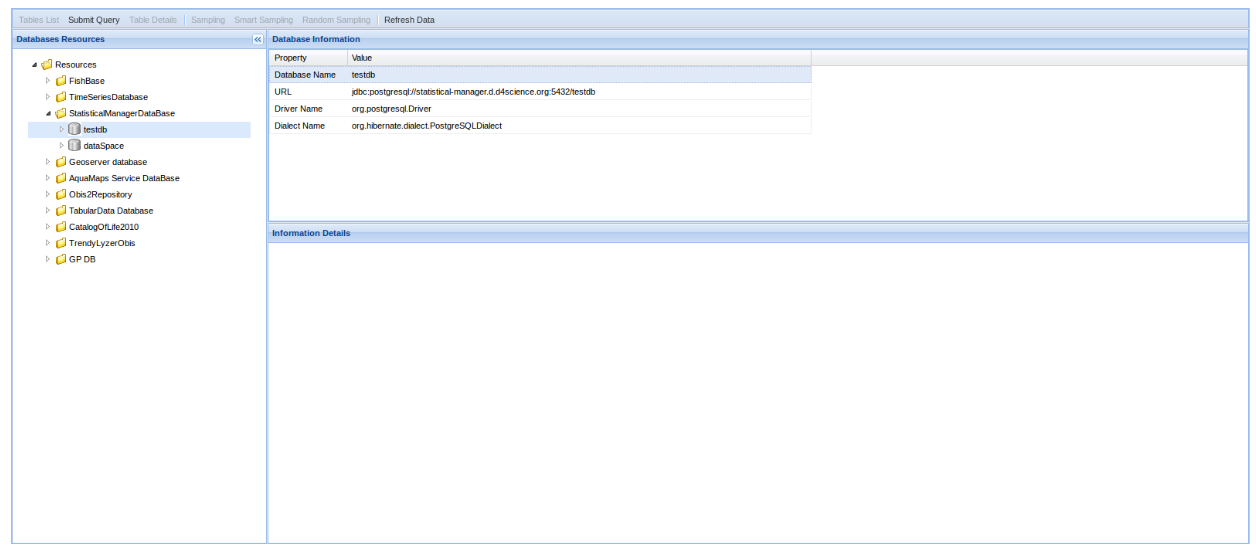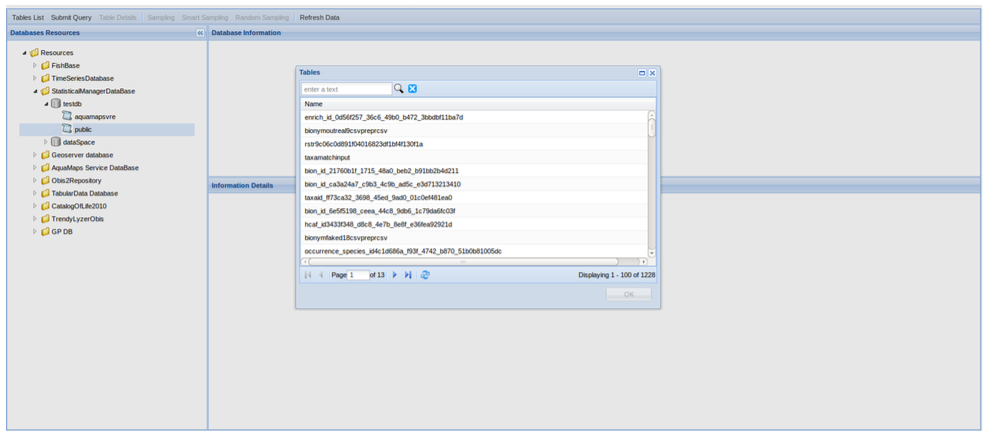Difference between revisions of "Databases Manager Tutorial"
(→Databases Resources) |
|||
| Line 21: | Line 21: | ||
'''Fig. 2''' - A Screenshot of the Databases Manager WebApp showing the list of the available tables of a selected DB. | '''Fig. 2''' - A Screenshot of the Databases Manager WebApp showing the list of the available tables of a selected DB. | ||
| − | + | It is possible to select and work on a Table by clicking OK in the "Tables" window. The selected Table information are visualised into the same Database Information Panel. From here the following functionalities and related buttons get activated: | |
| − | + | * Table Details | |
| + | ** Shows the details of the selected table in the Information Details panel (located under the Databases Information one) in terms of: Create Statement, Column Names, Number of rows; | ||
| + | * Sampling | ||
| + | * Smart Sampling | ||
| + | * Random Sampling | ||
Revision as of 11:55, 8 June 2015
The Databases Manager WebApp allows you to Submit Queries (and therefore retrieve information) to any of the Relational Databases registered in the Infrastructure, if you are entitled to.
Fig. 1 - A Screenshot of the Databases Manager WebApp showing the available Databases in the Infrastructure on the left.
Databases Resources
The Databases Resources panel shows the Databases (DBs) available in the infrastructure. By clicking on one of the item in the panel (a DB) in the related "Database Information" panel the following info are shown:
- Database Name
- URL
- Driver name
- Dialect Name
Fig. 1 shows a DB named "testdb" opened in the Database Information Panel. Specifically a DB hosted in a PostgreSQL environment.
By clicking on a DB the SubmitQuery button gets activated. It is also possible to see the list of the table names present in a DB by clicking on the "Tables List" button located on the very top-left corner, see Fig. 2.
Fig. 2 - A Screenshot of the Databases Manager WebApp showing the list of the available tables of a selected DB.
It is possible to select and work on a Table by clicking OK in the "Tables" window. The selected Table information are visualised into the same Database Information Panel. From here the following functionalities and related buttons get activated:
- Table Details
- Shows the details of the selected table in the Information Details panel (located under the Databases Information one) in terms of: Create Statement, Column Names, Number of rows;
- Sampling
- Smart Sampling
- Random Sampling

